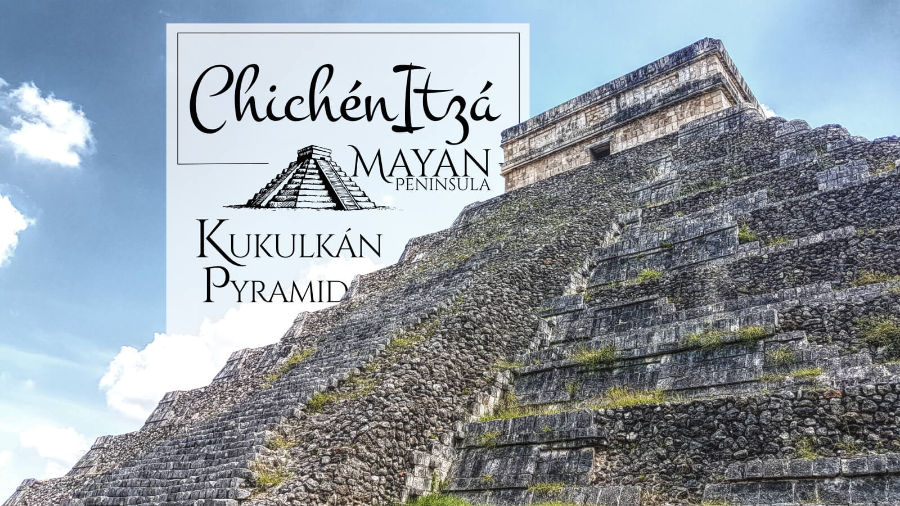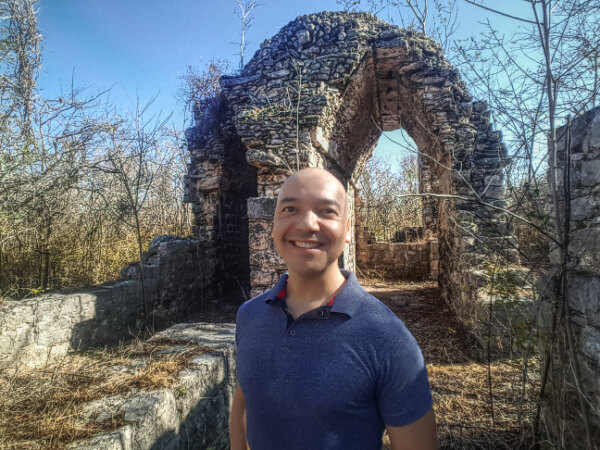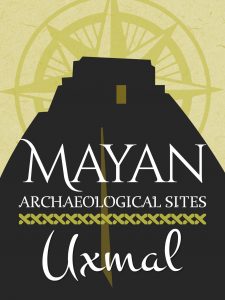The Kukulkan Pyramid in Chichen Itza
The Kukulkan Pyramid, also commonly known as El Castillo (The Castle), is the most impressive building in the Archeological Site of Chichen Itza, and one of the highest of all Mayan architecture.
Kukulkan comes from the words “snake-quetzal” in Yucatec Mayan. The Quetzal is a long-tailed bird found in the region, so Kukulkan can be interpreted as “Feathered Serpent”.
This monumental building is a pyramid of nine staggered bodies 24 meters high, with a staircase on each side and a temple at the top. The decorative motifs of the facade are snakes and jaguars of Toltec influence, which confirms that the construction of the building corresponds to the stage of greatest flourishing of the Itza culture.
Calendar Building of the Kukulkan Pyramid
The Kukulkán Pyramid in Chichen Itza demonstrates the deep knowledge of mathematics, geometry, acoustics, and astronomy that the Maya possessed. Being an initially agricultural society, the Mayans observed carefully the behavior of the stations, the variations of the trajectories of the Sun and the stars, and combining their knowledge, they managed to register them in the construction of the temple dedicated to their god Kukulkan.
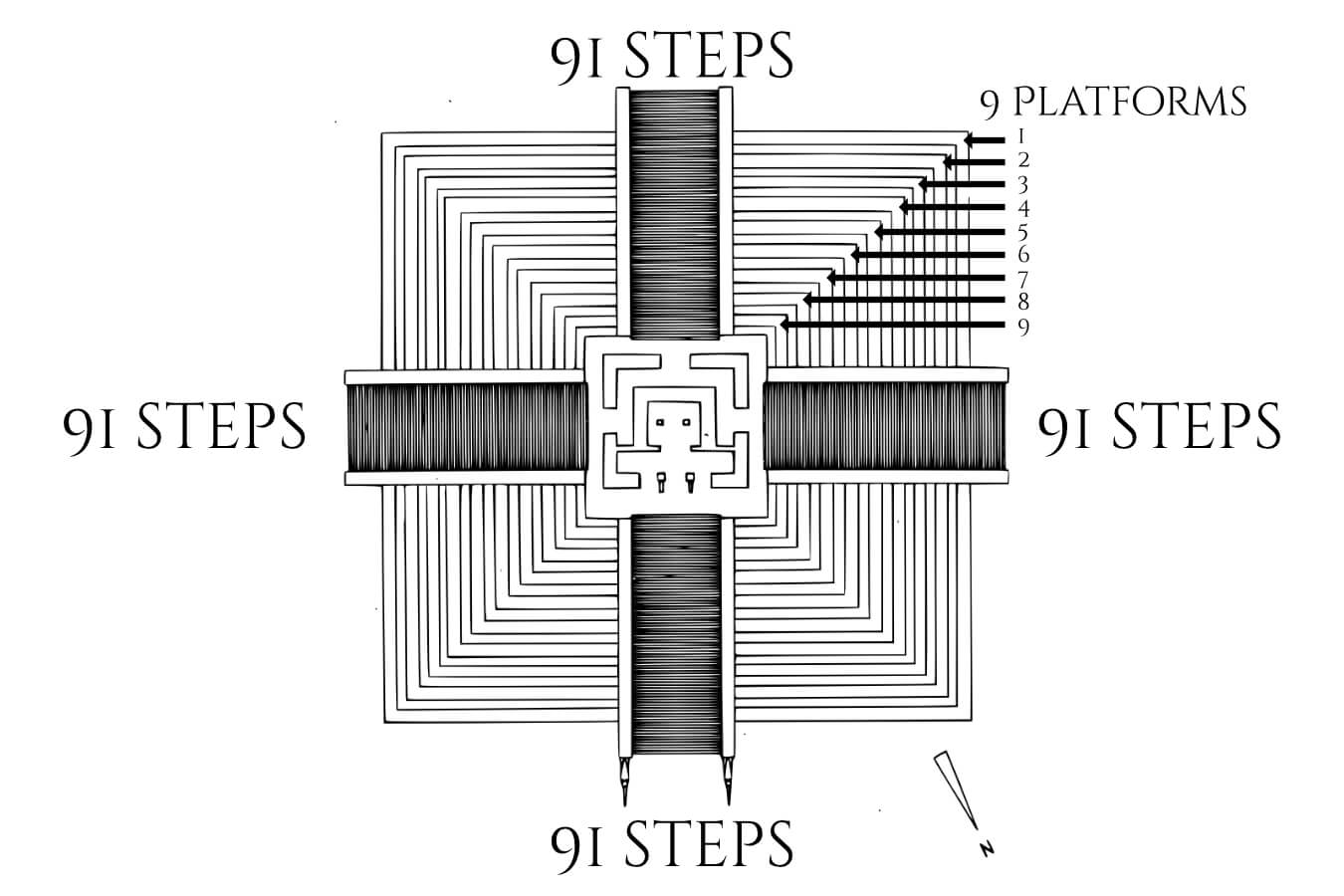
It’s thought that this pyramid is the representation of the Mayan Calendar: each step is a day of the year, and since each side has 91 steps, multiplied by four sides totaling 364, plus one that represents the platform, we get 365 days of the solar year, so it is thought that the monument was erected in honor of the sun god. Also, if you see the pyramid on one side, the corners of its overlapping platforms add up to 18, which are the months of 20 days of the Mayan Haab Calendar.
One of the 7 Wonders of the Contemporary World
It’s now considered one of the “New Seven Wonders of the Contemporary World” by means of the New Open World Corporation a global election based on the internet and in which theoretically anyone with access to the network could vote. It’s worth mentioning that it was the Pyramid of Kukulkan in Chichen Itza and not the archaeological site as a whole that was the winner.

Three layered Pyramid
The Pyramid you see now is the third “layer” of buildings with a total of three structures that correspond to different time periods: the oldest one was built between the years 500 and 800, then a second one was built on top of it. The third Pyramid in Chichen Itza, the one you can see right now was built over the years 1,050 and 1,300.
The Mayans didn’t destroy buildings because they were sacred, instead, they built on top of them.
This second Pyramid has an entrance through a narrow passage by one of the sides of the north stairway. A jaguar painted red with inlaid jade was discovered which probably used as a throne, it’s now closed to the public just like climbing to the top of the Pyramid.
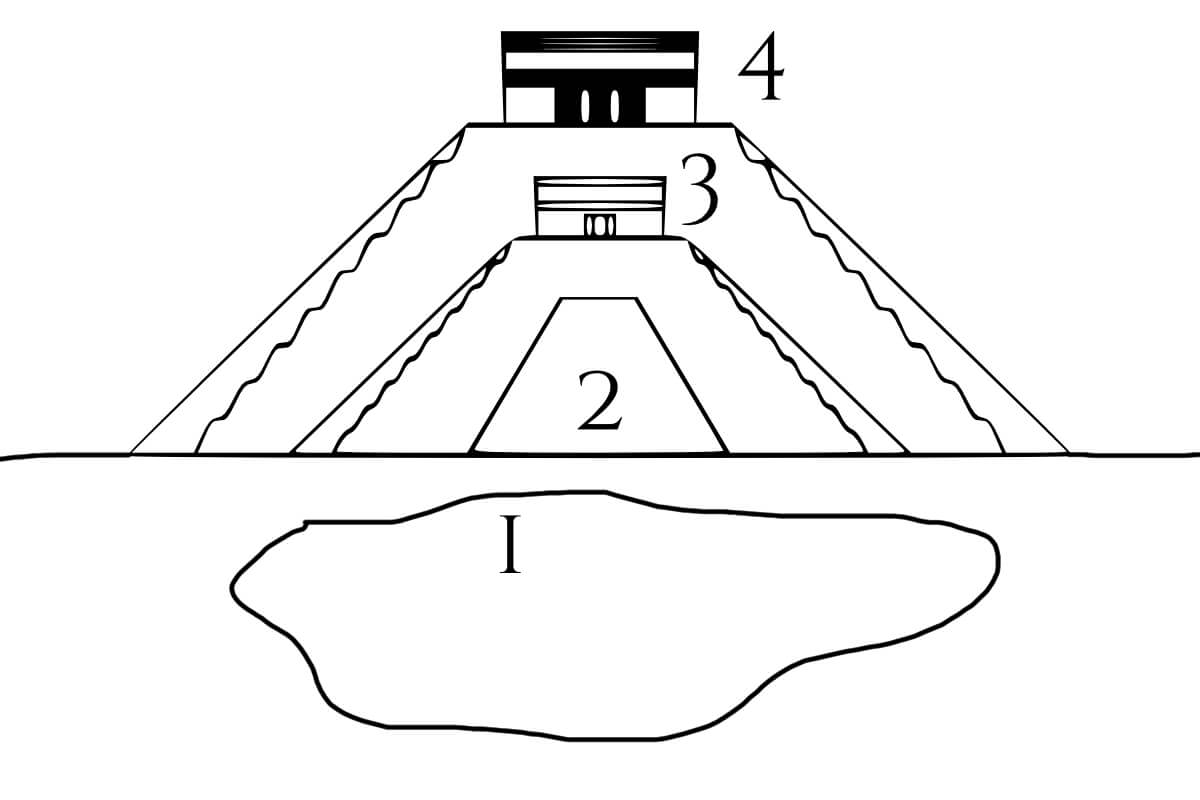
- Cenote.
- First construction built between the years 500 and 800.
- Second construction built on top of the first one.
- The Pyramid as you see it today.
Mayan Equinox in the Kukulkan Pyramid in Chichen Itza
This phenomenon called Equinox can be observed twice a year at sunset, on March 21 and September 21 (and the two days before and after these dates), the building is the scene of the equinoctial phenomenon called “light and shadow”.

During these days, the sun projects seven triangles of light that slowly slide from top to bottom of The Kukulkan Pyramid in Chichen Itza; as time goes by, a serpent seems to descend from the temple and the last ray of light is projected onto the head of the feathered serpent at the base of the stairway. The phenomenon lasts approximately 3 hours before sunset.
This effect is due to the Earth’s own movements, rotation on its axis and around the sun, as well as the variant of its ecliptic, and the tilt of the Earth’s axis. Because of this, we’ll be able to observe that the sun is appearing in different positions.
The Mayan considered all these variables and with great attention observed the possible phenomena of light and shadow generated during each day of the year. They built the Kukulkan Pyramid taking into account all these variables.
Read the entire article on the Chichen Itza Equinox.
Inside the Pyramid of Kukulkan in Chichen Itza
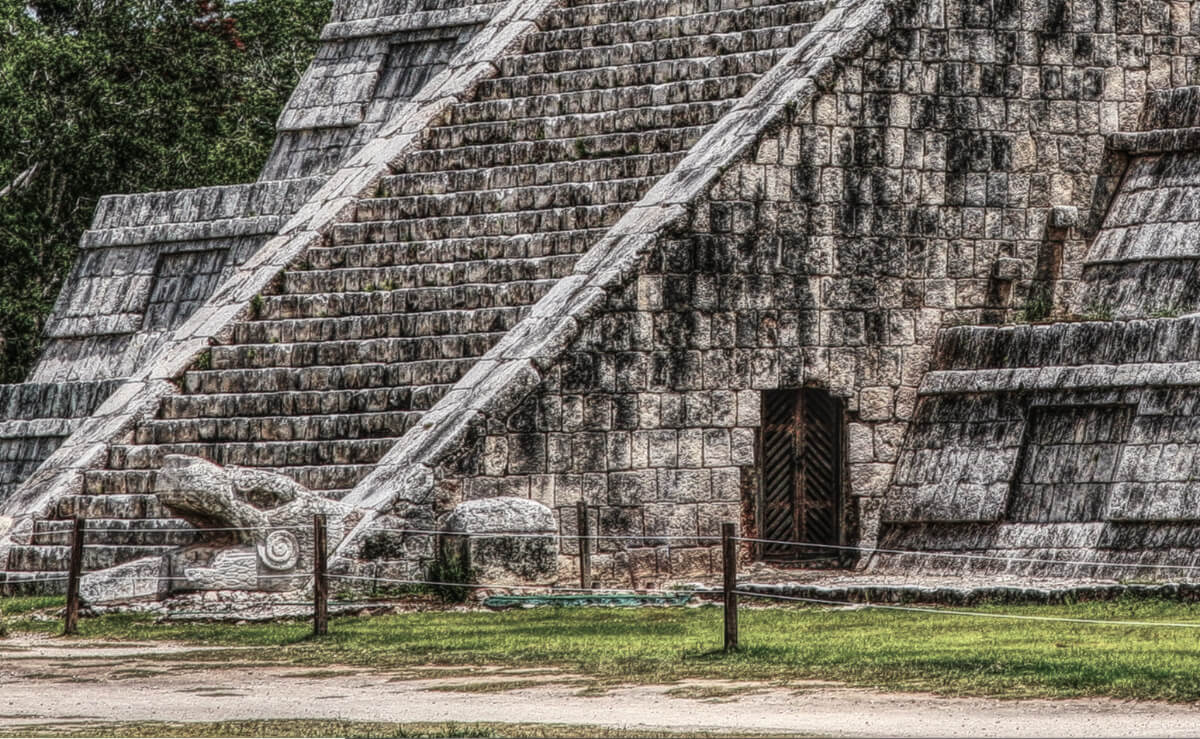
In April 1931, seeking to confirm the hypothesis that the structure of the Kukulkan Pyramid was built on another older pyramid, excavation and exploration work began. By doing this they found a box with objects of coral, obsidian, and turquoise inlays next to human remains.

Then a figure of Chac Mool was found inside the Substructure’s Temple with nacre shell on his nails, teeth, and eyes. The room where the discovery was made is known as the room of offerings or north chamber.
Only a few meters away, a second enclosure called the Sacrificial Chamber was discovered, where more human bones were found.
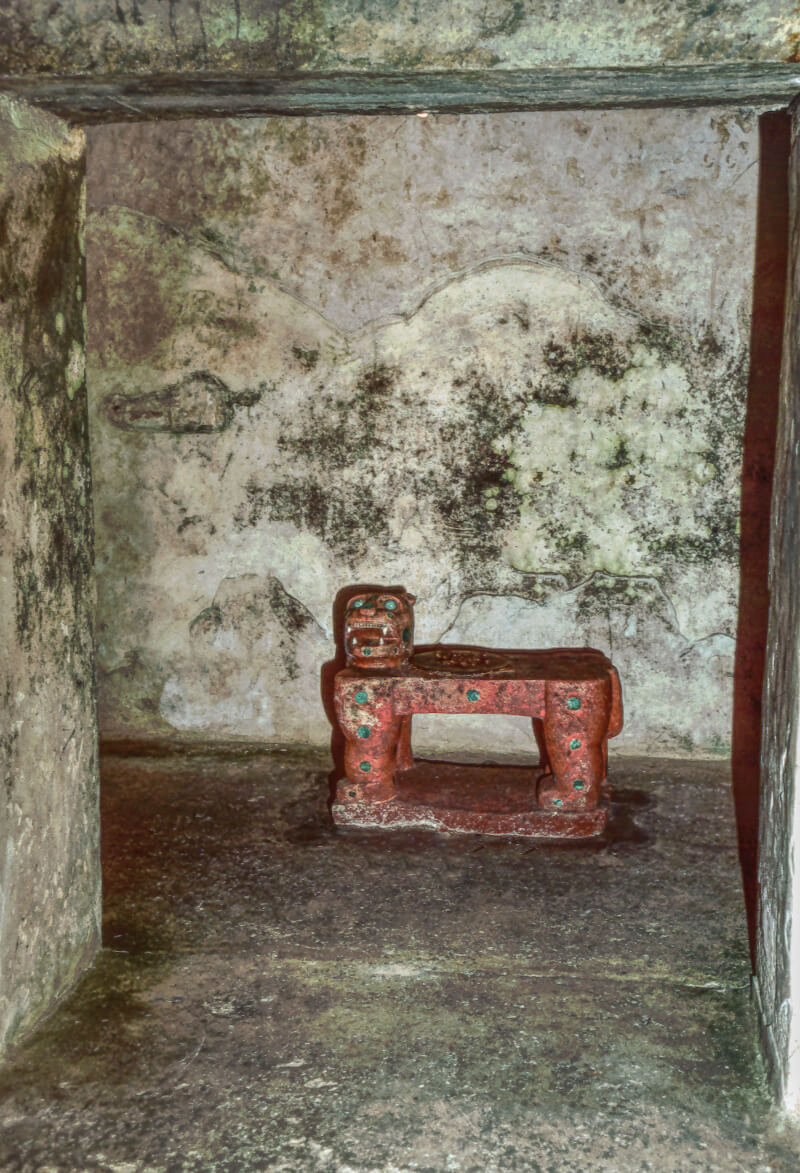
Also, a sculpture of a jaguar was found. This is a red sculpture with 74 jade incrustations that simulate the characteristic spots of the jaguar; the eyes are simulated with the same stone and the fangs and teeth are painted white flint.
Physical description of The Castle in Chichen Itza
This construction is composed of a base with a square floor plan of 55.5 m per side. It has nine staggered and sloping bodies that reach a total height of 24 m, decorated with slightly protruding rectangles that look similar to Zapotec culture and El Tajin architecture.
Access to the temple was through any of the four staircases bordered by rafters, the north one has heads of feathered serpents.
The temple on the top’s main entrance consists of three gaps formed by two serpentine columns, whose heads are the bases and the tails support the lintels that were made of wood. The sanctuary or chamber with vaulted ceiling has two pilasters decorated with bas-reliefs that supported the roof; behind this chamber, there’s a narrow gallery with three doors that lead to the west, south and east stairways.
The temple has a sloping and smooth vertical wall; then follows the frieze between two molded cornices, whose central strip has three sunken panels, one of them with a Chac mask or god of rain. The jambs of the doors and the interior pilasters show figures of warriors and other richly attired characters.
An interesting fact is that the Kukulkan Temple is not perfectly aligned in the center. On the top of
Location of El Castillo in Chichen Itza
El Castillo in Chichen Itza is the first thing you see when entering Chichen Itza after a short road. It’s in the middle of the main square surrounded by the Great Ball Court, Tzompantli, Temple of the Eagles and Jaguars, Venus Temple, and the Warriors Temple.

